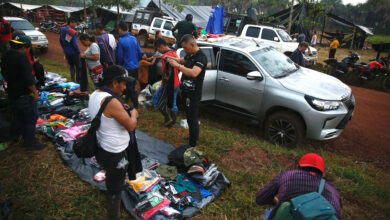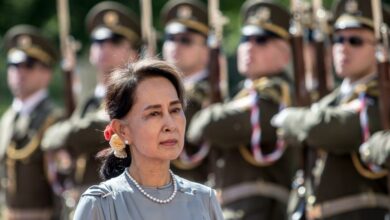Committee: Trump knew his plan to overturn 2020 election was illegal

Washington, Jun 16 (EFE).- Former President Donald Trump pressured his vice president, Mike Pence, to block the certification of the result of the 2020 presidential balloting won by Democrat Joe Biden knowing that his plan to overturn the election was “illegal.”
That is what the Select Committee investigating the Jan. 6 attack on the US Capitol demonstrated on Thursday afternoon in its third public hearing with testimony from several witnesses, documents and videotaped recordings bolstering that claim.
Despite not being present in the hearing room, the key figure on this day of live testimony was Pence who, according to one of the judges who appeared as a witness, prevented a “paralyzing constitutional crisis” in the United States by disobeying Trump’s demand that he halt the election certification proceedings.
The committee presented concrete evidence from witness testimony and other documentation regarding the pressure to which Trump subjected Pence to block certification of the November 2020 election result.
On Jan. 6, Pence – in his role as vice president – was presiding over the joint session of Congress, where lawmakers were going to confirm Biden’s victory, when the huge mob, fired up to “fight like hell” minutes earlier by Trump himself, stormed the Capitol, forcing legislators to temporarily suspend the certification proceedings and take shelter.
Trump publicly and private pressured Pence to halt the legislative session, claiming without proof that Democrats had committed massive election fraud and “stolen” reelection from him. Had Pence halted the certification proceedings as Trump was demanding, lawmakers would not have been able to complete their task of confirming Biden’s victory, at least at that time.
During Thursday’s hearing the committee focused on demonstrating the “unconstitutionality” of what Trump was demanding of Pence and showing that the president did so knowing that it was illegal.
One of the witnesses, retired Judge Michael Luttig, who was an informal adviser to Pence at the time, emphasized that if the VP had obeyed Trump and the then-president would have been declared to have “won” reelection, this “would have plunged America into what I believe, would have been tantamount to a revolution within a constitutional crisis in America.”
Luttig was appointed to the US 4th Circuit Court of Appeals by President George H. W. Bush.
In videotape clips shown to the hearing audience, and to the nationwide television audience, several witnesses were questioned by the committee, including Trump’s daughter and former adviser Ivanka, who stated that her father held a telephone conversation with Pence on the morning of Jan. 6.
Ivanka Trump described that call as a rather “heated” conversation and said that her father used a different tone of voice with Pence than he had used on previous occasions, while personal assistant to the president, Nick Luna, recalled hearing Trump called the VP a “wimp.”
In another recording, Pence’s former cabinet chief, Mark Short, said that Trump lied to reporters by saying in a statement released on the eve of the Capitol assault that the VP supported his plan to overturn the election result.
According to Short, on Jan. 5 Pence told Trump that he could take no action to reverse their election defeat and shortly after that The New York Times published a report about what had occurred at that meeting, to which the president responded with a statement saying that both he and Pence were “in total agreement that the vice president has the power to act.”
Short said that statement was “false,” adding that Trump had twisted Pence’s point of view on the matter.
To demonstrate the link between Trump’s pressure on Pence and the demonstrators who invaded the Capitol, the committee projected video images with the attackers shouting that the VP was a “traitor” and with the tumult in the Capitol, Pence left the congressional chamber and took refuge with staffers and Secret Service agents in a room elsewhere in the building for 4 1/2 hours.
Another of the witnesses before the committee on Thursday, Pence’s attorney Gregory Jacob, explained that the VP rejected the idea of fleeing the Capitol in a Secret Service vehicle because he “did not want the world to see the image of the vice president of the United States fleeing the Capitol” and he was resolved to completing the task scheduled for that day, which was his “constitutional duty,” to certify the election result.
A good part of the session was devoted to the efforts of one of Trump’s former lawyers, John Eastman, who developed in writing the theory that Pence, in his role as vice president, had the authority to decide the result of the election, despite the fact that he was aware that this claim had no legal basis.
Lawmaker and committee co-chair Liz Cheney (Rep.-MT), who has long been at odds with Trump, emphasized in her remarks during the hearing that the former president and Eastman conspired to pressure Pence to block the confirmation of the election result.
However, Luttig said in his testimony that Eastman’s theory was “incorrect” and that there is no precedent in the Constitution or in US law to support it.
Meanwhile, Jacob said that Eastman told him that he knew his theory would not stand up before the US Supreme Court.





